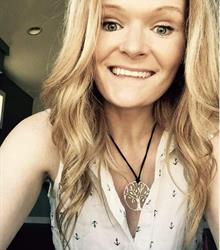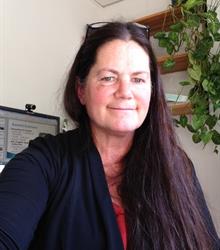Some of us have had the experience being transported to hospital in an ambulance. Others of us have made our own way to the local Emergency Department in the midst of an urgent health issue.
If you think back to your experience, you’ll likely recall these were slightly concerning, confusing situations. From the bright lights to the hectic pace to the unfamiliar language that paramedics, physicians or nurses sometimes use when communicating with patients or families, it can be a daunting experience.
Now imagine doing it when you can’t hear anything. And you're struggling mightily to communicate with the people desperately trying to help you. Who are asking you to turn your body a certain way, hold extremely still despite being in agony, or even simply take a deep breath and hold it.
Just take 10 seconds to imagine how you’d react, how you’d behave, how you’d feel.
You’re now partway towards understanding the challenges that someone who is Deaf, Deaf-Blind or Hard of Hearing faces when they need urgent medical help and don’t have access to the support of a qualified medical interpreter.

As a member of the Provincial Language Services (PLS) Community Advisory Group (CAG), Monika Lane (pictured at right) has lived that experience first-hand, not far from her Parksville home.
“There was a flurry of phone calls and the doctor was trying to figure out how to get interpretive services for me,” she recalls. “At that time, we didn’t have Virtual Remote Interpreter (VRI) services like we do in many parts of the province now, and there wasn’t the easy single phone number access to PLS that we have today.”
The difficulty communicating with paramedics, nurses or physicians is only part of the challenge for patients who have hearing and/or sight challenges.

For many British Columbians who are Deaf, Deaf-Blind and Hard of Hearing, English is not their first language, as most have ASL (American Sign Language) as their mother tongue. In fact, they may not know English well enough to have a full discussion with the health care professional trying to help them, says Aastrid Evensen (pictured at right), a Deaf Interpreter who works as part of an interpreting team in many instances.
“Hearing interpreters can be great, they have good skills, and their use of ASL can be quite good,” explains Aastrid. “But I grew up communicating with ASL. I’ve used it all my life and know the history and the full use of the language.”
“Many people think that ASL is more like simple gestures,” says Aastrid. “It’s actually a very complex language, and it’s very robust compared to other languages; it’s how we communicate in our lives on a daily basis.”
“I feel like a whole person when I can use sign language, so being able to have an interpreter bridge that gap is so key.”
Monika agrees and appreciates the efforts that many of the medical professionals she’s been treated by have made to help secure medical interpretive services as part of her visit. But she’s also experienced instances when medical interpretive services were seen as just a “nice to have” element.
“Having the interpreter on hand doesn’t just help the Deaf person, it’s a way of providing better care to the patient by really reducing the degree of confusion,” she explains. “If there’s no medical interpreter on hand to help interpret, some Deaf people won’t return to care, which can be extremely dangerous to their health.”
There have been some big steps forward in recent years, with one of those being the recent rollout of Virtual Remote Interpreter (VRI) services to BCEHS (BC Emergency Health Services), a first step in helping deaf, deaf-blind and hard-of-hearing people when they need paramedic assistance.
Both Aastrid and Monika are happy to celebrate those accomplishments and then focus on closing the gaps in other areas.
“For example, there are no interpretive services available for people accessing rehabilitation or dentistry services,” Aastrid explains. As well, she sees a clear need for better understanding of the role of Deaf Interpreters, even within the Deaf, Deaf-Blind or Hard-of-Hearing community.
“A lot of times patients themselves don’t even understand how they could benefit from having a Deaf Interpreter assisting them, as we’re able to provide them with access to a wider range of language,” she says.
As a CAG member since the group began more than two years ago, Monika remains committed to helping the medical system be a better reflection of the population it serves.
“It’s important for medical professionals to understand that they’re not ‘doing us a favour’ by getting a medical interpreter to be part of the process,” she explains. “Being able to receive our medical diagnosis and advice in sign language is a charter right, and it can have a huge impact on patient care.
PHSA’s Provincial Language Service provides interpreting and translation services to health-care providers in the health authority system and in private practice across B.C. If you work in clinical care, do you know how and when to access interpreters for patients?
Learn more about the services the Provincial Language Service offers:
